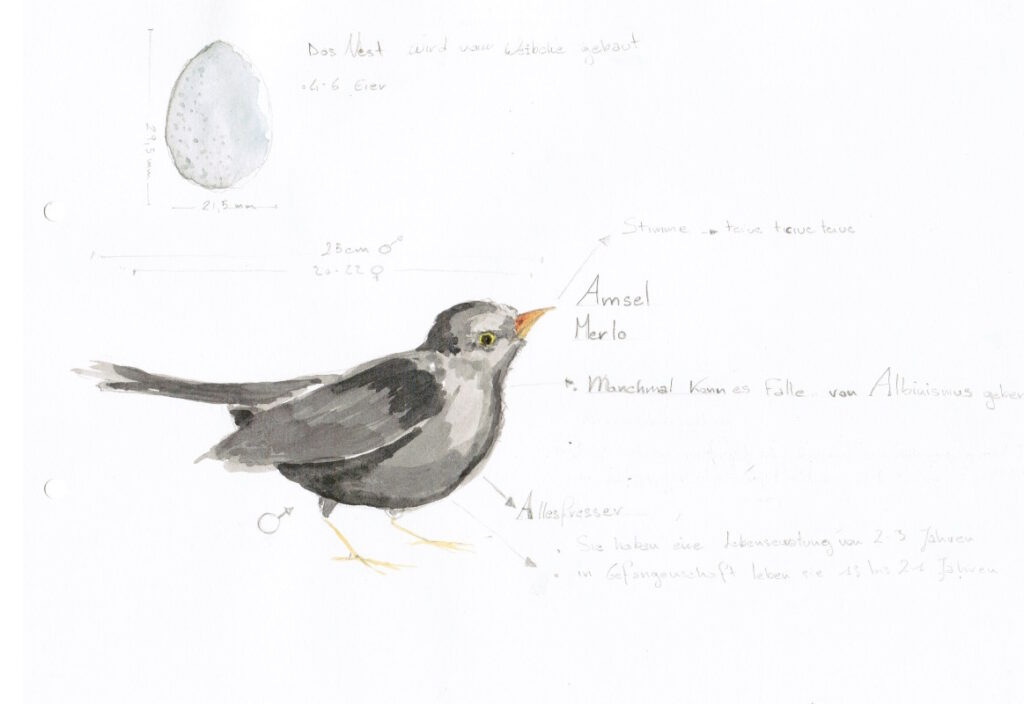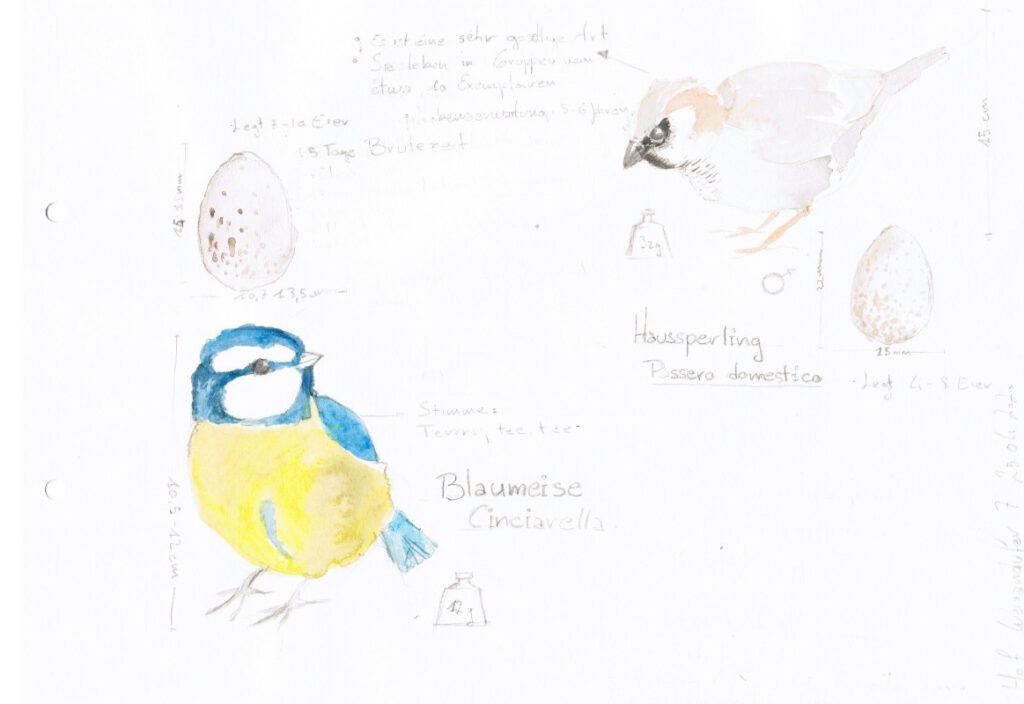Birdlanguage
As days are getting longer birds´ voices are becoming even more noticeable. It will be many more in some weeks time. The repetitive melorhythmic stanza of the wood pigeon, the clacking sounds of starlings who also imitate exotic birds they might have met while being away, the tawny owl calling more often now, woodpeckers competing in drumming sessions and of course the melodic flute song of blackbird are some examples of what is going on.

Blackbird is a good teacher to start dealing with birdlanguage. Whenever you hear a blackbird singing its rather long melodic stanzas you can be sure that no enemy will be around, that it is a male probably attracting a female and/or indicating that it is his territory. In contrast to singing, calling sounds much different. It is mostly short sounds usually using one note only to express contact calls, begging or warning. As ground breeders blackbirds are masters in both, ground alarm and air alarm. Typical “duk-duk-duk” sounds in a frequency depending on how close the enemy actually is indicate ground alarm. Highly pitched “ziiih” sounds indicate predators from above as sparrow hawk who is feeding almost exclusively on birds.
Task: Try to differentiate between bird song (or baseline) and alarm. In a next step you could figure out the source of the alarm: Is it yourself or other predators looking for prey? If bird alarm is expressed further away (60 to 70 metres) it could be other animals that have noticed your presence hence uttering a so called secondary alarm. Gradually you will understand what birds are telling about the landscape around.
Sitting (as introduced in the previous blog) is probably the best way of experiencing baseline in bird language. Some more birds are rather sensitive to changes around them hence giving their warnings to all other species around. Tits who are so curious are a good example for that as well as the high “tix-tix” of the woodpecker.

Extended tasks:
Listen for a differentiation between melodic singers, rhythmic singers and melorhythmic singers. Paraphrase the singing with metaphors, syllables you can hear, etc.
Listen for the second one of a species!
Spot the bird and perceive features like silhouette, type of beak, length of legs, top of head, shape of tail, prominent wing feathers, flight pattern. Add drawings to your nature journals. AP
